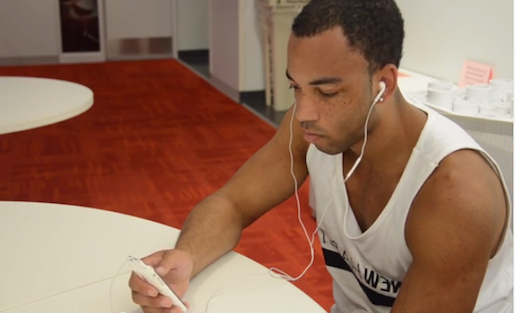This week we find out why the founder of the startup SpokenLayer sees value in turning text stories into audio files, and we learn how WNYC expanded its mobile app to include personalized playlists.
PART 1: SpokenLayer
While several technologies have come (and gone) that automatically create audio or video files from text, the startup SpokenLayer has built a system where a network of humans quickly provide voiced audio versions of text stories. Founder and Chief Executive Officer Will Mayo (@wrmayo) tells us how it works and explains why audio may offer another revenue opportunity.
Reporting by Reuben Stern and Katy Mersmann.
[To skip directly to this segment in YouTube, click here.]
Additional information:
Fast Company’s Co.Labs added SpokenLayer audio to four stories on its website and reported mixed results. In short, important factors seemed to be “selecting stories that deserve audio” (i.e. articles that don’t already have a lot of multimedia components) and making sure the audio widget design makes clear to readers “that there’s more value to this article than they would have initially assumed.”
A few examples:
- Between heaven and earth: icons of the revolution (Cooper-Hewitt museum)
- How Does the Brain Learn Best? Smart Studying Strategies (KQED Mind/Shift)
PART 2: WNYC’s personalized playlists
As part of a larger digital strategy, New York Public Radio‘s mobile app for its flagship station WNYC enables commuters to create customized playlists based on topics of interest and time available for listening. The material is then downloaded and available for listening offline. We learn what went into building the app from Marine Boudeau (@marineboudeau), director of product development and user experience at New York Public Radio.
Reporting by Reuben Stern and Rachel Wise.
[To skip directly to this segment in YouTube, click here.]
For more information:
The TekRevue website gives the WNYC app a hearty thumbs-up overall but suggests that longer maximum times (i.e. beyond the current 3-hour limit) would facilitate listening on long plane rides. The review also identifies another point of potential user frustration: Online audio files pulled from radio broadcasts sometimes include promos to upcoming on-air shows that don’t necessarily end up in a user’s playlist via the app.
As Current.org reports, the app required changes in WNYC’s workflow, requiring content to be “tagged and categorized by topic and length instead of simply being posted online as part of full episodes of radio programming.”
Reuben Stern is the deputy director of the Futures Lab at the Reynolds Journalism Institute and host and co-producer of the weekly Futures Lab video update.
The Reynolds Journalism Institute’s Futures Lab video update features a roundup of fresh ideas, techniques and developments to help spark innovation and change in newsrooms across all media platforms. Visit the RJI website for the full archive of Futures Lab videos, or download the iPad app to watch the show wherever you go. You can also sign up to receive email notification of each new episode.


